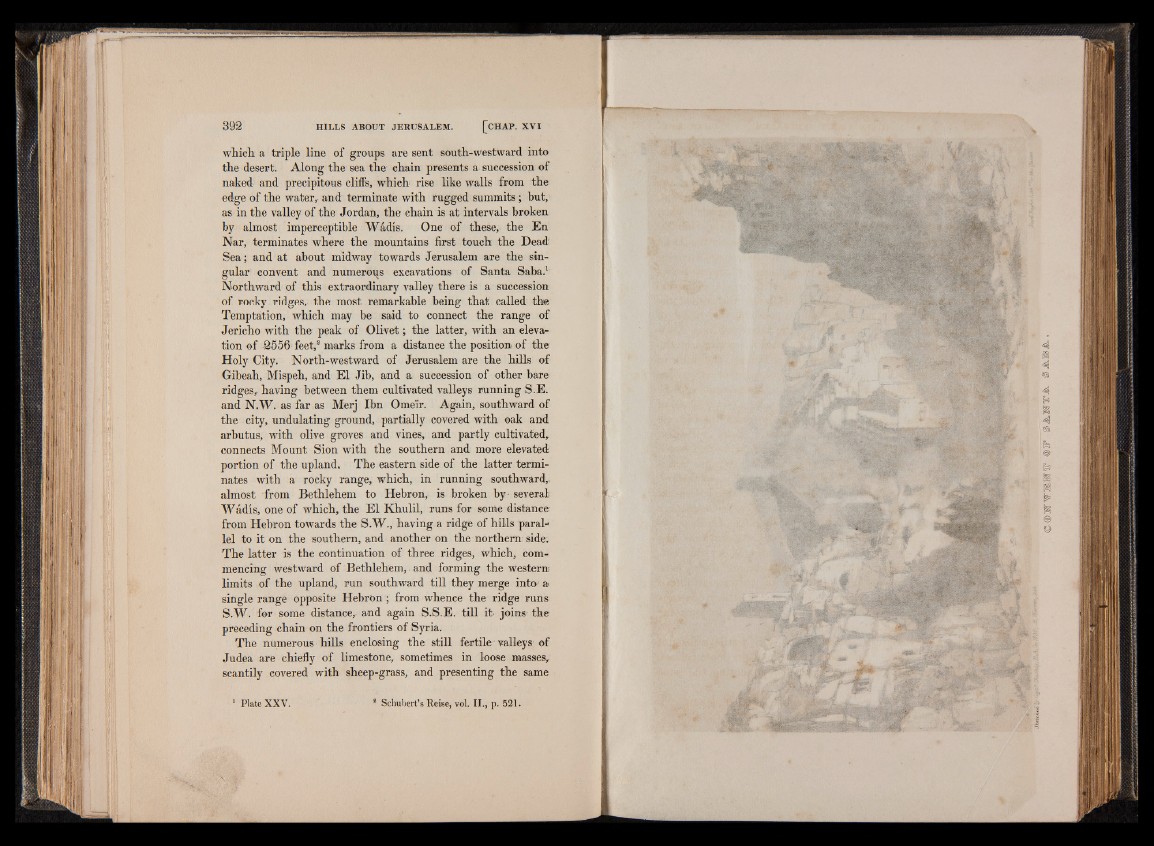
392 HILLS ABOUT JERUSALEM. [CHAP. X V I
which a triple line of groups are sent south-westward into
the desert. Along the sea the- chain presents a succession of
naked and precipitous cliffs, which rise like walls from the
edge of the water,- and terminate with rugged summits; hut,
as in the valley of the Jordan, the chain is at intervals broken
by almost imperceptible Wadis. One of these, the En
Nar, terminates where the mountains first touch the Dead
Sea ; and at about midway towards Jerusalem are the singular
convent and numerous excavations of Santa Saba.1
Northward of this extraordinary valley there is a succession
of rocky ridges, the most remarkable being that called the
Temptation, which may be said to connect the range of
Jericho with the peak of Olivet; the latter, with an elevation
of 2556 feet,2 marks from a distance the position of the
Holy City. North-westward of Jerusalem are the hills of
Gibeah, Mispeh, and El Jib, and a succession of other bare
ridges,, having between them cultivated valleys running S.E.
and N.W. as far as Merj Ibn Omeir. Again, southward of
the city, undulating ground, partially covered with oak and
arbutus, with olive groves and vines, and partly cultivated,
connects Mount Sion with the southern and more elevated
portion of the upland. The eastern side of the latter terminates
with a rocky range, which, in running southward,,
almost from Bethlehem to Hebron, is broken by- several
Wádís, one of which, the El Khulil, runs for some distance
from Hebron towards the S.W., having a ridge of hills parallel
to it on the southern, and another on the northern side.
The latter is the continuation of three ridges, which, commencing
westward of Bethlehem,. and farming the western
limits of the upland, run southward till they merge into1 a
single range opposite Hebron; from whenee the ridge runs
S.W. for some distance, and again S.S.E. till it, joins- the
preceding chain on the frontiers of Syria.
The numerous hills enclosing the still fertile valleys of
Judea are chiefly of limestone, sometimes in loose masses,
scantily covered with sheep-grass, and presenting the same
1 Plate XXV. * Schubert’s Reise, vol. II., p. 521.